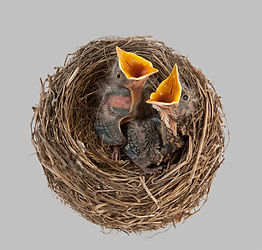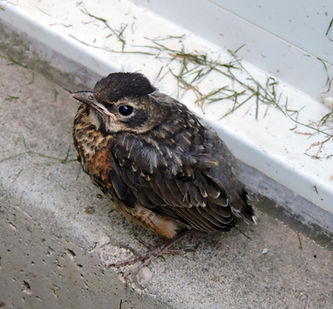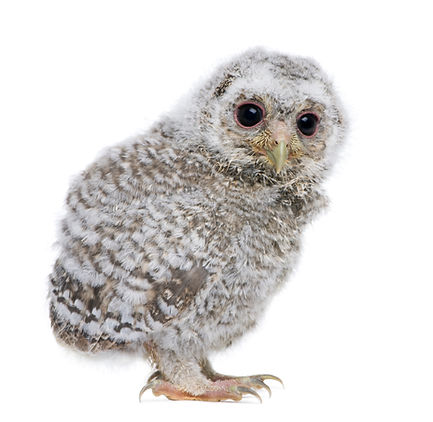Bird
We've treated the tiniest hummingbird to a fully mature Bald Eagle and Great Blue Heron – and everything in between. The one thing that should be done for ALL of these birds before bringing them to the center is to ensure that they are transported in a dark, fully secured box or paper bag or covered pet crate. Never transport them in a cage with bars or wire as they can become panicked and injure themselves.
Always wear gloves or wrap the injured bird gently in a linen towel. Some of the smallest birds have the sharpest claws, and you definitely don't want to be bare-handed around the powerful beaks and claws of a hawk or owl.
Nestling
-
Still in nest
-
Very small with few to no feathers or with only downy feathers.
-
Can't stand or perch.
-
Weak and can barely move, or lays in the grass and seems shaky.
-
Makes small peeping sounds.
Fledgling
-
Often on the ground as they leave the nest and are learning to fly
-
Body is fully feathered including tail feathers
-
Hopping around on the ground and fluttering about.
-
Chirping loudly, calling to its parents


If you find a baby bird on the ground, you’ll need to know two things to determine whether or not the baby bird needs help. First, you need to know if the bird is injured and second, you’ll need to know if it is a fledgling or nestling.
Signs of Injury Include:
-
Baby is cold to the touch
-
Makes no attempt to move, fly, open its mouth, or react when approached
-
Difficulty holding its head up
-
Baby is covered in bugs, ants, or what looks like pieces of rice grains (fly packets)
-
Baby is dehydrated – Run your finger up or down the skin on the bird’s breast. If the skin wrinkles and stays wrinkled, she is dehydrated. If the skin doesn’t react much to your touch, that is a good thing,
-
Baby is bleeding or has puncture wounds. Any round, hole shaped wounds on the bird is a sign of something very serious for a bird.
-
Baby is gasping or gurgling or making other noises when it tries to breathe. Birds will often scream and make a ton of noise when ‘rescued’ and that’s okay, but sticky sounding breathing, or gasping is not normal.
-
Baby is tilted to one side, falling over and not able to right itself. This behavior may be accompanied by seizures as well.

Fun Fact:
Did you know that baby owls sleep stretched out face down?
Lights Out Baltimore
Every sunrise during fall and spring migration, a core group of volunteers walk the streets of downtown Baltimore to rescue injured birds from window collisions and collect dead birds. Injured ones are taken to Phoenix Wildlife Center and dead ones are taken to the
Smithsonian's Museum of Natural History. Over 2000 birds have been found dead since monitoring the Baltimore streets in 2008 and over 300 have been rescued including bats.

